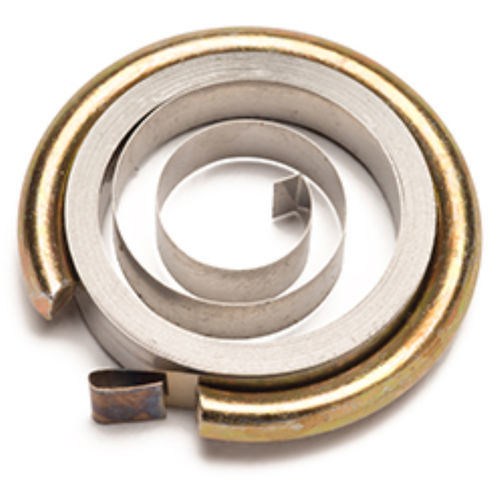
- Materials - Tools - Components
- Standard Mechanical Component
- Traction spring
- AMETEK SENSORS, TEST & CALIBRATION
- Products
- Catalogs
- News & Trends
- Exhibitions
Power spring SH3C10tractioncoiledstainless steel





Add to favorites
Compare this product
Characteristics
- Function
- traction
- Type
- coiled
- Material
- stainless steel, carbon steel
- Applications
- power, cans, case
- Other characteristics
- custom
Description
A power spring’s natural tendency to expand imparts a moment to either the arbor or case, producing usable torque. The torque generated is cumulative so that the torque increases as the spring is wound tighter and decreases as it unwinds.
Power springs, also known as clock springs, can be assembled into a customer’s housing for immediate assembly or supplied with a retaining ring for transferring the spring to a customer’s housing.
Torque and the total number of turns are the most important output requirements in a power spring design. The performance of a power spring is defined by the dimensions of the spring material (thickness, width and length) and the space available (housing and arbor diameters).
Power springs from Hunter Spring are made from 301 High Yield Stainless Steel. Other materials including Elgiloy, Inconel, or high-carbon steel can be used upon request for custom applications.
- High-torque delivery per unit of deflection
- Normal residual stresses
- Wide variety of materials can be used
Hunter spring does not stock power springs. Springs are designed for customer specific applications only. Use the design worksheet to specify your requirements and allow our Application Engineers to provide you with a design to meet your needs.
We invite you to consult us. We may well be able to formulate a custom solution that will surprise you with its efficiency and versatility.
Catalogs
No catalogs are available for this product.
See all of AMETEK SENSORS, TEST & CALIBRATION‘s catalogsOther AMETEK SENSORS, TEST & CALIBRATION products
Springs
*Prices are pre-tax. They exclude delivery charges and customs duties and do not include additional charges for installation or activation options. Prices are indicative only and may vary by country, with changes to the cost of raw materials and exchange rates.








